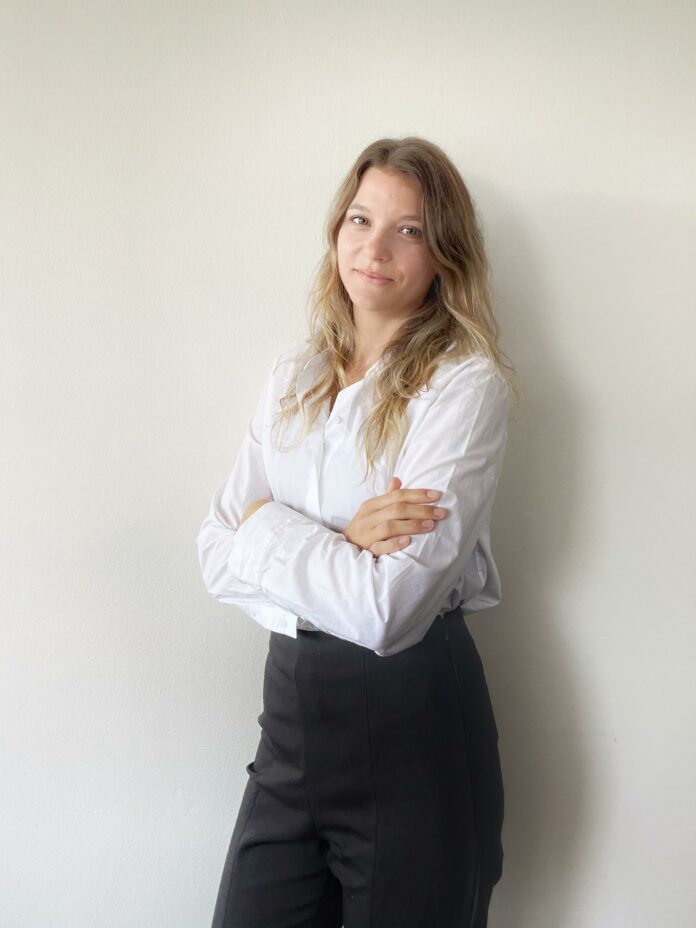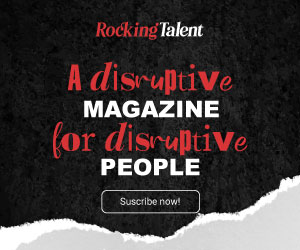Ailin is from Argentina. Her turning point started while pursuing a Master’s in New York. Her initial goal to apply neuroscience in the field led her to become a Behavioral Scientist expert. Her passion for social impact projects has always been reflected in her path and has led her journey until today.
We would love to hear your story, Ailin. What is your favorite memory from your time as a student? How did that experience shape your professional journey?
Of course, I will not delve too far back into my adolescence, but I can share that it was a challenge for me to define the career path I wanted to pursue. I found myself drawn to a wide range of subjects, particularly within the artistic realm and anything related to creation and creativity. Simultaneously, I harbored a curiosity for the sciences and an eagerness to comprehend the inner workings of the world, delving into the underlying causes of our perceptions. This exploration led me down various avenues: I initially began studying architecture, then dabbled in biology, later completed half of a philosophy degree, and found my way to studying psychology and neuroscience. Amid this constant quest to uncover a connection between creativity, idea generation, research, and understanding of reality, I can confidently say that I experienced a moment of clarity, an “insight,” during my time pursuing a master’s degree in New York. It was then that I honed in on psychology with a focus on neuroscience.
Could you tell us about your early experiences in the workforce?
Well, when I graduated from my degree, I had the opportunity to connect with someone who became my mentor, Estanislao Bachrach, a renowned biologist in Argentina. He was focused on creativity within businesses, which marked my initial foray into applying neuroscience knowledge in corporate settings. This intrigued me. Then, during my master’s program and while studying neuroscience of aesthetics at the Metropolitan Museum Medialab, I discovered my interest in social impact and creating well-being for diverse populations in real-life situations. After completing my master’s, I decided to return to Argentina and work for the City of Buenos Aires Government. Here, I delved into what is known as behavioral sciences, focusing on understanding how people behave and how to maximize their well-being within society. I was among the pioneers in Argentina working on these matters, which led me to establish connections with international organizations in search of specialized talent in this field. In Latin America, the application of behavioral sciences is still relatively uncommon, and the perspective of addressing practical issues from a scientific foundation motivated me to seek out new opportunities.
Did you experience a turning point that made you reevaluate your path?
Now, I realized that if I stayed solely within the city government, my path would be constrained. I yearned to explore further and apply my knowledge across diverse domains. This is when I founded my own behavioral science consultancy and began collaborating with international organizations, not only in Argentina but also in countries like Paraguay, Uruguay, and eventually the United States. My work extended to Asia, South Africa, and Central Europe, enabling me to apply my expertise within a variety of global contexts.
Well… for those of us who are less familiar with this subject, how would you define behavioral sciences?
Absolutely, behavioral sciences constitute a collection of disciplines dedicated to the study of human behavior and the factors that influence the promotion or inhibition of certain behaviors in specific contexts. This is an interdisciplinary perspective, meaning that one does not need to be exclusively an expert in behavioral sciences. You could be an economist, psychologist, neuroscientist, sociologist, anthropologist, and from within your field of study within this interdisciplinary group, you seek to measure and assess through data the factors that determine certain behaviors. Additionally, you aim to test solutions to adapt these behaviors to the environments in which people live.
Perfect. So… Are you the founder of one of the first consulting firms in this field in Latin America? How did that come about? What is your company like and more?
That is correct, before the pandemic, I was already working as a behavioral scientist, and as an independent consultant. I realized that there was a high demand in the market for this. I applied behavioral sciences in combination with strategic design, better known as design thinking. Both the government and private companies needed to address complex problems that involved behaviors and relationships among people. At that moment, I started to have a lot of work and I realized that I needed to structure myself as a team. I also understood that the research process, hypothesis formulation, and design always benefit from interdisciplinary collaboration within a team. So, I began to gather a team, which eventually evolved into a consulting firm. Currently, we are a stable team of about five individuals. When projects come in, we assess the knowledge required for each project, organize ourselves, and work on these applied research endeavors.
We have also noticed that you have specialized in environmental issues and social inclusion. What inspired you to focus on these topics and contribute so positively to society?
Well, these three issues are some of the most crucial challenges our society is facing today. Firstly, climate change demands immediate action, as our future likely hinges on how humans adjust our behavior to prevent harmful consequences. Regarding gender and social inclusion, there has historically been a debt owed to certain populations that the current system tends to disadvantage. This is tied to how we behave and what beliefs we hold, as well as breaking down the historical stereotypes we have constructed. These stereotypes can be dismantled and lead us toward a more just society. The focus on gender and inclusion is important to me because it guides us toward a more equitable and just society. As for climate change, we cannot continue to ignore the reality that, as a species, we must rectify what we have damaged if we want to ensure our long-term survival.
What differences do you notice in behavior between the United States and Latin America?
There are significant differences in how people interact between Latin America and more Nordic societies like Canada and the United States. In Latin America, there is a noticeable openness, willingness to spend time together, and spontaneous inclusion in activities. In contrast, Nordic cultures tend to be more organized, requiring planned meetings and keeping private and social lives more separate. I have experienced varying degrees of warmth and integration in different cities. Both cultures have positive aspects, but differences exist in how quickly one is integrated into groups and the level of shared information. Understanding these cultural dynamics can be a challenge, as seen in my interactions with colleagues from Colombia. For instance, I have learned to interpret indirect requests, which has been enlightening for an Argentinian whose culture promotes more direct ways of communicating. These cross-cultural experiences highlight the diverse behaviors humans exhibit within diverse cultural contexts.
What positive aspects do you see related to artificial intelligence?
Well, I see that artificial intelligence has enormous potential in repetitive tasks or in handling data that may not necessarily need to be retained internally. It functions like an assistant that is available for one to access that knowledge immediately, saving time. For instance, in my work, artificial intelligence significantly reduces time and increases my productivity. If I need to search for a series of articles or academic references on a topic, I use a specific tool that provides me with the bibliographic references I am seeking. Then, in the case of the GPT chat, I ask it to help me draft something (I work a lot in English), to phrase it perfectly for presentation, or to generate a PowerPoint presentation. This way, the time I used to spend on these tasks becomes free time that I can fill with more productivity or even enjoyable activities. I believe that the ideal would be to have a better balance between personal life and work, as that makes us healthier and allows us to allocate time to physical exercise and activities that make us feel good, like playing music or taking a walk in the park.
Interviewed by: Ximena Desaloms





